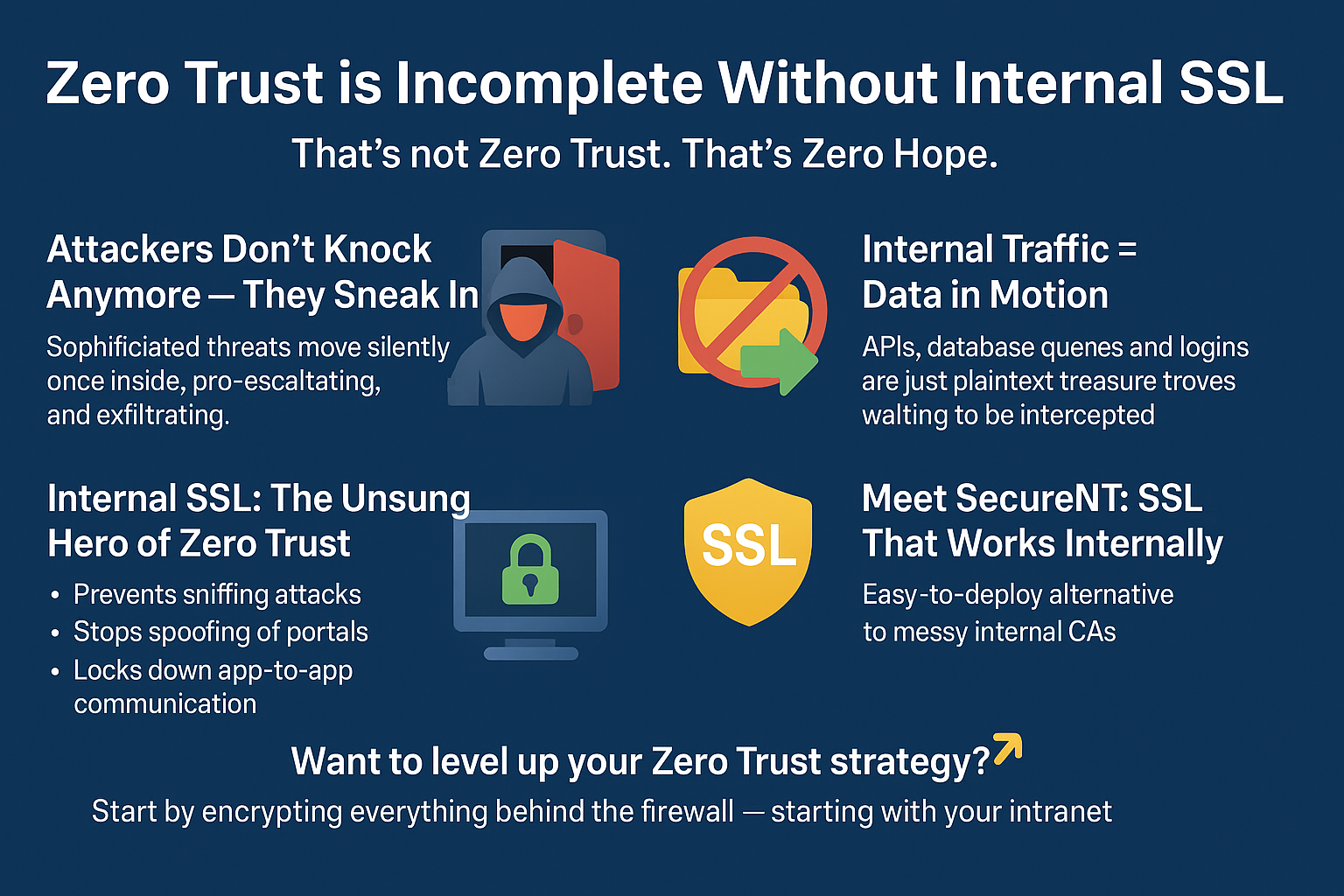2025-04-23 16:42:00

You’ve segmented your networks, tightened your firewall rules, and added MFA to external access — but your internal dashboards, APIs, and admin panels still use HTTP or self-signed SSL?
That’s not Zero Trust. That’s Zero Hope.
In the world of modern cybersecurity, we’ve finally moved past the old castle-and-moat mentality. Today, “trust no one, verify everything” is the new mantra. But while many organizations are quick to secure the perimeter, they leave a gaping hole inside: unprotected internal traffic.
Attackers Don’t Knock Anymore — They Sneak In
Sophisticated threats don’t always come crashing through the front gate. Phishing attacks, supply chain compromises, and exploited vulnerabilities often give attackers legitimate internal access. Once inside, they move laterally — probing, escalating, and exfiltrating.
In a world where threat actors behave like stealthy insiders, your internal environment has to be treated like hostile territory.
Internal Traffic = Data in Motion
It’s easy to assume traffic inside the network is safe. But every API call, database query, or dashboard login traveling over HTTP is just plaintext treasure waiting to be intercepted. Even traffic secured by self-signed certificates isn't much better. Most systems ignore validation errors or skip verification entirely — leaving you just as vulnerable to spoofing and man-in-the-middle (MITM) attacks.
Real Damage Comes from the Inside
Take these real-world breaches:
- An insider at a financial institution intercepted internal credentials by sniffing network traffic from unencrypted admin tools.
- A healthcare provider suffered a data leak when a compromised service account was used to scrape unprotected internal APIs.
- In a manufacturing firm, an attacker mimicked an internal app to fool employees and gain deeper access — all thanks to a missing SSL certificate.
The common thread? Unsecured internal systems.
Internal SSL: The Unsung Hero of Zero Trust
When done right, internal SSL does more than padlock your browser tab — it creates a verifiable, encrypted ecosystem inside your network:
- Prevents sniffing attacks by encrypting data between users and internal services.
- Stops spoofing by verifying that internal portals are who they say they are.
- Locks down app-to-app communication by ensuring that only trusted services can talk to each other securely.
This isn’t optional anymore. It’s foundational.
Meet SecureNT: SSL That Actually Works Internally
Forget the nightmare of managing your own internal Certificate Authority. SecureNT offers enterprise-grade SSL purpose-built for intranets, internal APIs, dev environments, and more.
- Easy to deploy across your infrastructure
- Pre-validated certificates you can trust
- No more self-signed warnings or broken integrations
- Dedicated support to walk you through implementation
Whether you’re just getting started or fine-tuning your Zero Trust posture, SecureNT is your shortcut to internal encryption that just works.
Want to level up your Zero Trust strategy?
Start by encrypting everything behind the firewall — beginning with your intranet.
👉 Get started with SecureNT today.
Tagged In
Copyright © 2025 Secure Network Traffic. All rights reserved. SecureNT is a registered trademark of Secure Network Traffic.